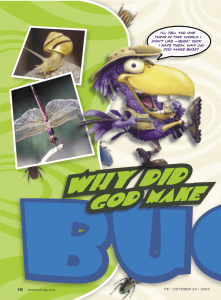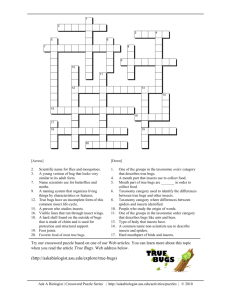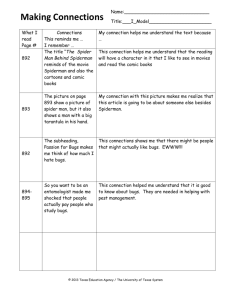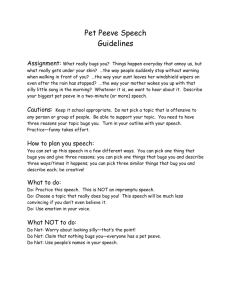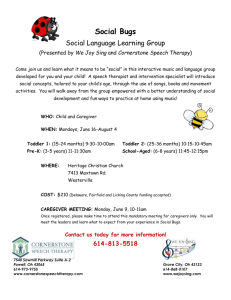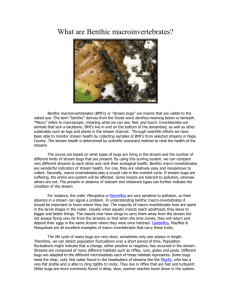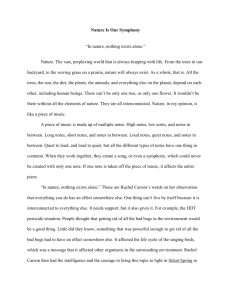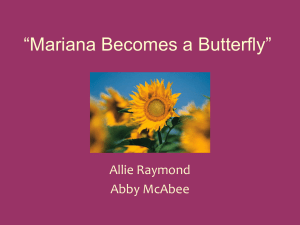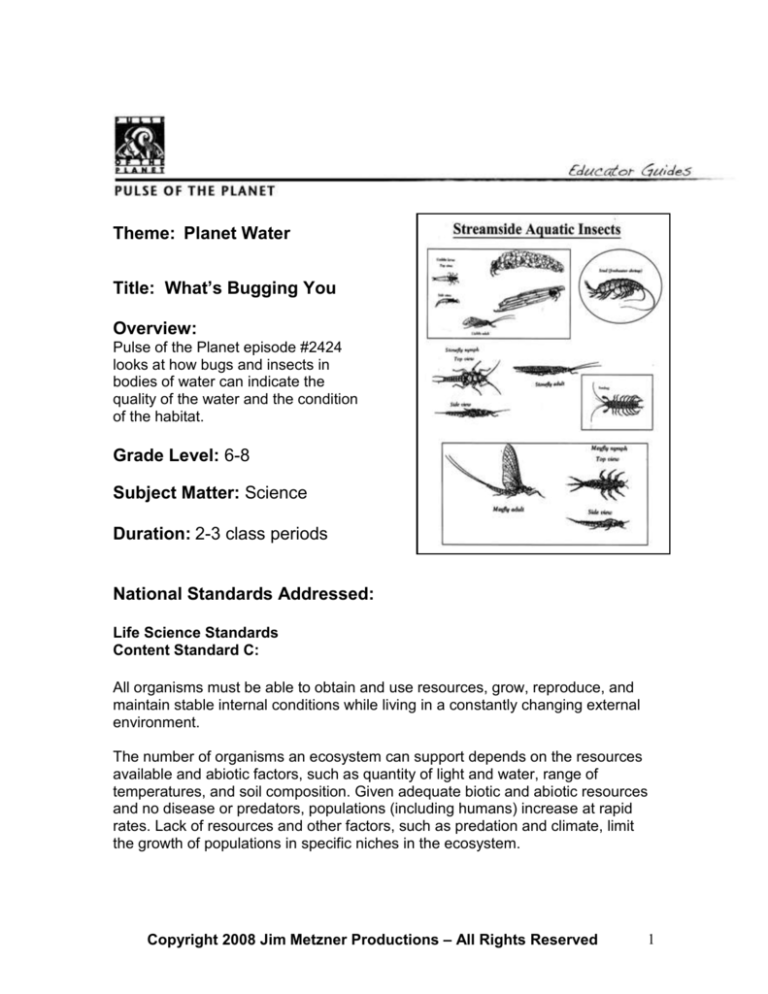
Theme: Planet Water
Title: What’s Bugging You
Overview:
Pulse of the Planet episode #2424
looks at how bugs and insects in
bodies of water can indicate the
quality of the water and the condition
of the habitat.
Grade Level: 6-8
Subject Matter: Science
Duration: 2-3 class periods
National Standards Addressed:
Life Science Standards
Content Standard C:
All organisms must be able to obtain and use resources, grow, reproduce, and
maintain stable internal conditions while living in a constantly changing external
environment.
The number of organisms an ecosystem can support depends on the resources
available and abiotic factors, such as quantity of light and water, range of
temperatures, and soil composition. Given adequate biotic and abiotic resources
and no disease or predators, populations (including humans) increase at rapid
rates. Lack of resources and other factors, such as predation and climate, limit
the growth of populations in specific niches in the ecosystem.
Copyright 2008 Jim Metzner Productions – All Rights Reserved
1
History and Nature of Science
Content Standard G:
Science requires different abilities, depending on such factors as the field of
study and type of inquiry. Science is very much a human endeavor, and the work
of science relies on basic human qualities, such as reasoning, insight, energy,
skill, and creativity--as well as on scientific habits of mind, such as intellectual
honesty, tolerance of ambiguity, skepticism, and openness to new ideas.
Objectives:
In this lesson, students will listen to Pulse of the Planet #2424 Bugs in the Water
and define key words and concepts from the episode. Next, students will take on
the role of a scientist and complete an online sample challenge!
Materials:
Computer Lab with Internet access
Web Site: The Stream Study: http://people.virginia.edu/~sos-iwla/StreamStudy/StreamStudyHomePage/StreamStudy.HTML
Procedure:
1. Tell the students that you are going to BUG them about water quality.
Introduce POP #2424 and tell the students to listen about what bugs indicate to
scientists about water quality. Play POP #2424.
2. Have students respond the question about what bugs indicate to scientists
about water quality. Discuss the responses.
o Ask the class if they had any idea that insects provide data about
water quality. Students may share experiences about bugs they
have seen in bodies of water.
3. Prepare POP #2424 at the 20-second mark. Tell students to listen carefully
for how the insects/bugs are collected from the stream.
o Let students know that you are going to have them “act out” the
collection process based on what is described in the segment. Play
POP #2424 until the 55-second mark. Select students to act out
how the bugs/insects are collected. Option: have some of the
materials heard in the clip to use in the “acting out” exercise.
4. Next, you will be using The Stream Study web site at:
http://people.virginia.edu/~sos-iwla/StreamStudy/StreamStudyHomePage/StreamStudy.HTML
as a tutorial and online sample collection challenge. Preview the site and be
familiar with the Table of Contents 1-2. Project the The Stream Study web site
for the students.
o Focus their attention to the graphic on the upper right hand corner
depicting scientists collecting insects/bugs from a stream. Tell the
students that Table of Content steps 1-2 will serve as a tutorial to
Copyright 2008 Jim Metzner Productions – All Rights Reserved
2
learn about the insects/bugs collected in streams. These
organisms are often referred to as macroinvertebrates.
o Guide the class through steps 1-2 and stop at Practice samples.
5. Tell the class that they are now going gain experience with macroinvertebrate
identification and stream quality assessment. They will take on the role of a
scientist and go through an online sample challenge.
6. Divide the class into teams of 2 or 3 and provide each team with a computer
and the Sample Record and Assessment Form.
o Allow the students to begin their online sample challenge. Circulate
the room observing and discussing the teams’ discoveries. Note:
make sure no teams click on the answer link until they complete the
assessment form and have your permission.
o Have each team briefly share the experiences and report their
findings.
8. Conclude the lesson by playing POP #2424 and BUG the students about a
job well done!
Handouts:
Sample Record and Assessment Form. Available at:
http://people.virginia.edu/~sos-iwla/Stream-Study/Methods/Form.HTML
Special thanks to the following scientists for their help with this project:
Pulse of the Planet Programs: #2424 “Bugs in the Water: Living Barometer”
Dave Herbst
Associate Research Biologist
Sierra Nevada Aquatic Research Laboratory
University of California at Santa Barbara
Header Image
Name: Streamside Aquatic Insect Diagram
Credit: FWS
Copyright 2008 Jim Metzner Productions – All Rights Reserved
3

